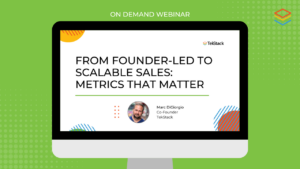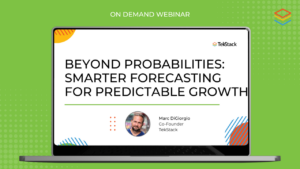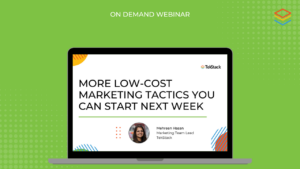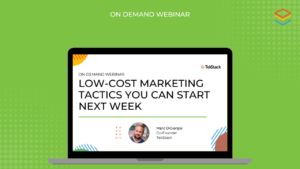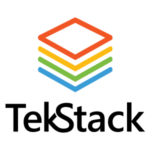
If you’re a CEO or COO in B2B Tech, you’re probably scrambling to adjust to a year of uncertainty. Regardless of if you are dependent on venture or growth funding, or run a bootstrapped business on your own cash, you need to be thinking about:
- Preserving or generating cash flow: Gaining new customers, maximizing services revenue to generate cash, and keeping existing customers
- Profitability: Turning the taps off in investment areas that don’t have immediate payback, making sure you control spending in all discretionary parts of the business
What impact can you make on your business in the first 30 days or less?
Double down on High win rate segments
Pick an Ideal Customer Profile that gets you enough of a market size to hit your business objectives. Forrester has a worksheet that helps you calculate how many accounts you need to target, based on your conversion metrics (if you’re interested in learning more about this, let us know). Stop spraying everyone in segments where you’ll never convert or win deals. Instead, spend that time and money in segments you are winning, and can convert. A segment can be defined by factors like Industry, geography, product, or buyer persona.
Interview customers in this segment and understand what value you deliver to their business each day. Make sure that feedback rolls back to the marketing team. 100% of your marketing communication needs to use the same precise words used by your buyers. Too often, marketing is completely disconnected from the customer – there is no feedback loop. Change that immediately.
Turn off high-cost low conversion demand sources
2023 is not the time to spend on high-cost low conversion demand sources. Experimentation is fun when the balance sheet is full of cash and we only care about top line growth. For many, this isn’t that year. If you can’t tie a direct attribution to the activity, then stop it and see what happens. Yes, the marketing team might talk about ‘air cover’ or ‘demand creation’ but if it means firing one extra person to keep an experiment going, they’ll quickly understand that this is the year for ‘demand capture’.
Switch to Account Centric Selling from broken MQL to SQL models
The old Lead, MQL to SQL conversion model is broken and drives really bad spending and worse decision making. Forrester’s new B2B Revenue Waterfall is an approach that better aligns to how buyers buy software in a business setting. The majority of B2B technology decisions are made by buying groups, but the internal processes used by your sales and marketing teams are not aligned to this at all. You are likely missing key insights and opportunities – your win rates will suffer if you don’t sell across the organization.
Switch to high touch outbound prospecting
Inbound playbooks have turned into a high cost, low conversion channel. Organic demand capture methods like SEO and Social have a significant hidden cost and take a very long time to get running. Paid ads don’t have hidden costs, they are right there in the open, but are so costly because of low conversion that they make your CAC suffer.
If you are a B2B technology company with a well defined ICP and buyer persona, the lowest cost channel by miles you should be exploiting is Outbound Prospecting. And we don’t mean sending 1000 automated high volume email sequences each day. This isn’t 2017, that doesn’t work at all. We are talking about building an outbound sequence that combines email, phone call, and LinkedIn activity with choreographed steps. Your sellers aren’t productive enough in their prospecting efforts, and outbound sequencing will increase productivity by 4-5X. Everyone can use more deal flow right now. If you want us to send you an example of an effective outbound sequence, sign up for our newsletter here.
Remove friction points from your sales process
First impressions go a long way with your buyer. There is a chance you are blowing your own deals because your sales process is not aligned to the buyer at all,
If your sales process is rooted in antiquated ways of thinking; (Think BANT, Challenger, Miller Heiman); it’s time to wake up and realize the buyer runs this show, and it’s their buying process. Remove all friction points immediately. Examples:
- Who is doing your inbound follow-up? It needs to be done in one hour or less. Skip the SDR and go straight to the rep. Rep too busy? If they aren’t hitting 150% quota, fire them for saying that.
- Prospect wants pricing? Give it to them immediately as a ballpark explaining the price drivers and for instances. In fact, this needs to be on your website. We are entering 2023, you are losing more interest for not having on there. If you say it’s ‘too confusing’ then fix it. It’s killing your deals anyway.
- Prospect wants a demo? Give it to them immediately in the form of a high-level overview. Amazing how quickly deals accelerate in the funnel after this point.
The last two scenarios are buying signals and will invite further engagement. Buyers are making emotional buying decisions. You can use cognitive bias to your advantage which will accelerate your deals and win rate.
Increase engagement with existing customers
This is a whole blog on its own. If you are fortunate to have a good-sized customer base, and there is a good chance that you looking for ways to get the most from your efforts back into the base. There are several steps you can take to put an Account plan in place:
1. Segment your customers
You need to segment your top quadrant customers from everyone else. Assign your top quadrant customers to an account manager and automatic engagement of the other customers. There is no need to have a high touch model for everyone, you won’t see the return.
How to segment? You really want to gauge two attributes. A customer’s appetite to adopt new technology, with a customer’s size. You want this combination. Customers that have a great appetitive but small size; or big size no appetite are not going to help you achieve your goals. Track which segment a customer is in and then tie your ARR to the segment. I think you’ll end up finding that 20% of your customers are in this ‘Leader’ segment along with 80% of your ARR.
2. Gauge health
People overthink this one. Yes you can get telemetry, build a health score algo, all that fancy stuff. But in your gut you can probably do your own “Red, Yellow, Green” score based on two data points. First, look at support requests. Too many or too little are both bad news. Second, run an NPS survey to gauge customer sentiment. As a practice, these should be run 30 days after go-live or 90 days before renewal.
3. Put in playbooks for each segment x health temperature
- Leaders x High NPS – Put your “Leaders” on a high touch engagement plan: Quarterly reviews and meetings, executive sponsors, the whole thing.
- Leaders x Low NPS – These companies are on fire, fix it immediately so that your ARR retention isnt at risk.
- Everyone else – Work this group like crazy. Add them to an automated campaign that includes monthly newsletters, customer webinars, and ‘office hours’ support windows. For the high NPS survey results, try to engage with testimonials, case studies, recorded webinars. For the low NPS survey results, get on a call to right side the issues. Most things can get worked through.
Obviously as a baseline, you need to know who your customers are, who the contacts are, what they own and at what price, if they are live and when that was, and if they are active with support. You also need to know when their renewal(s) come up, and at what pricing. This may not exist in a single place today.
Conclusion
That’s a fair bit of work to get done in 30 days, but it is possible to do, unless you are lacking the data or tools to get it done. In fairness, most organizations are buried in tools that produce data you can’t trust or takes too long to produce. Or they lack integrated tools to allow your teams to take timely action. This is where TekStack comes in.
Every B2B SaaS company already has a CRM, but 95 out of 100 times it’s bloated, lacks process design, holds and creates bad data, and doesn’t cover the entire organization. Worse, there may be dozens of tools hanging off it that cost a lot of money each year and don’t provide value. If you think you need to fix this, and achieve everything mentioned in this blog, you can contact us below.



